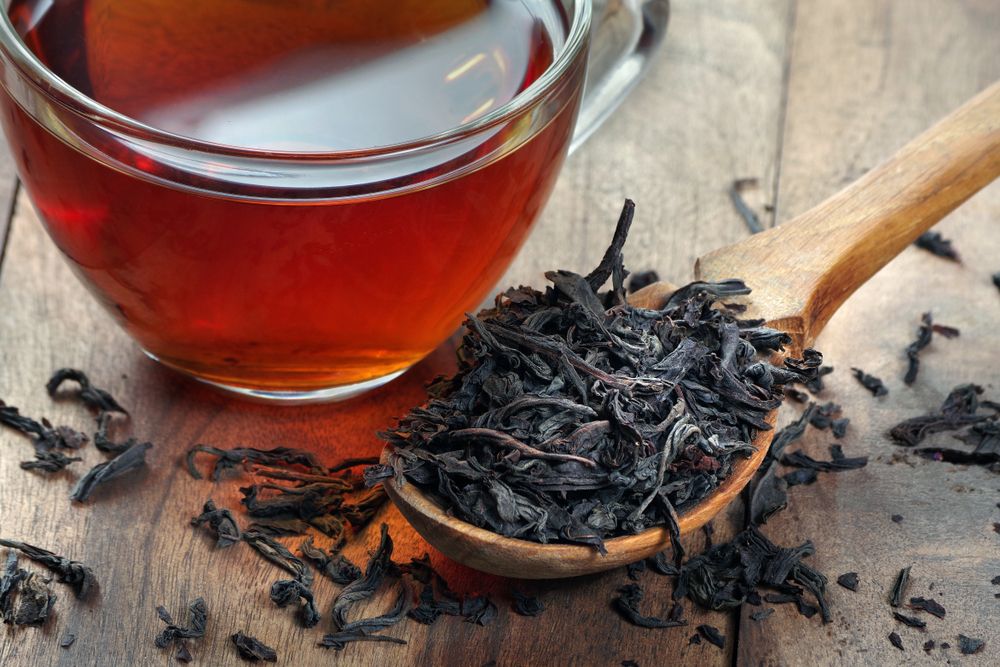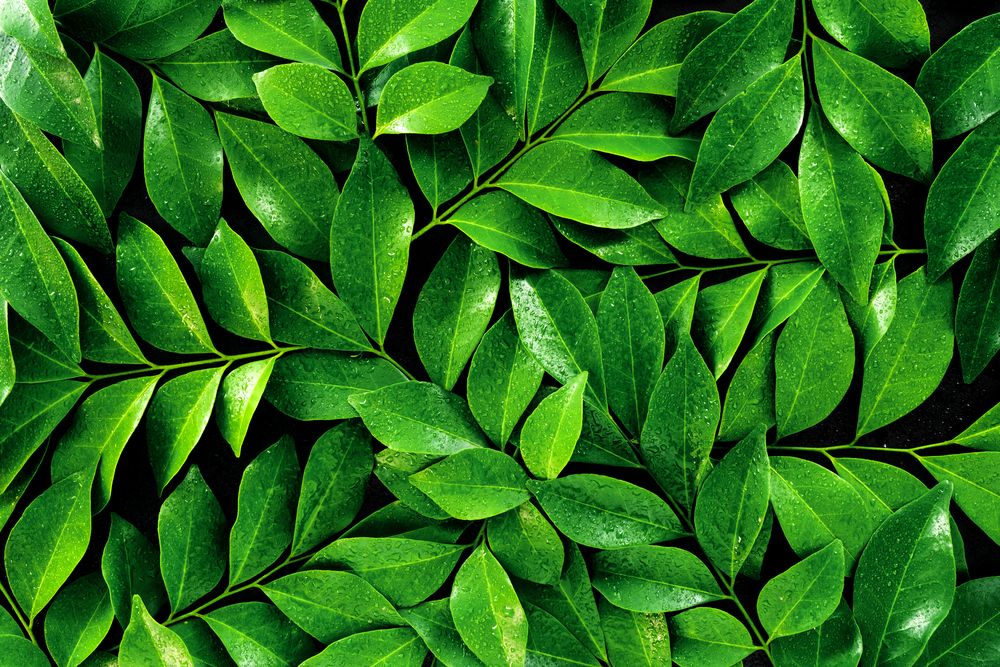
Tea is the second most popular beverage in the world, following water, with about 80% of American households regularly stocking it, according to the U.S. Census Bureau. In the U.S., black tea leads the way, making up around 84% of all tea consumed, while green tea accounts for about 15%. Given this significant difference in consumption, you might wonder: is one tea actually healthier than the other?
Let’s dive into the science and compare the health benefits of black tea and green tea.
Background and Origins: What's the Difference?

Interesting fact: both black and green tea come from the same plant, Camellia sinensis, but the difference lies in how they are processed. After tea leaves are harvested, they undergo wilting and oxidation, which gives each tea its unique aroma and color. However, the oxidation process can be halted using heat, which inactivates the enzymes. This variation in processing is what creates different types of tea, such as black and green.
Let’s take a closer look at these differences.
What is Black Tea?

Black tea is produced from the leaves of the Camellia sinensis plant, which are fully oxidized and fermented to create its bold, distinctive flavor. During oxidation, the leaves are exposed to air, which darkens their color and enhances their taste. Afterward, the leaves may be left whole or heated, dried, and crushed to produce black tea. This process results in a dark-colored tea with a rich, often slightly bitter flavor profile.
Popular pure black tea varieties include Assam and Darjeeling, while well-known blends include Earl Grey, Bigelow, and Chai teas.
What Is Green Tea?

Green tea is also made from the leaves of the Camellia sinensis plant, but it uses young, unfermented leaves. Unlike black tea, green tea leaves are quickly treated with heat to stop oxidation, preserving their fresh, natural state. Pan frying or steaming the leaves is essential to prevent oxidation caused by the plant's natural enzymes.
Sencha is the most popular variety of green tea, and other types, such as Matcha, Bancha, and Gyokuro, are derived from it. The flavor profile of green tea can vary depending on the specific type, but it is generally much milder compared to black tea.
It's worth noting that factors like water temperature, steeping time, and tea concentration can also influence the flavor of both green and black teas.
Nutritional Differences: How Do They Compare?

Black and green tea share similar nutrient profiles, as both provide caffeine, antioxidants, and various important phytonutrients. When prepared with 1 gram of tea leaves to 100 milliliters of water brewed for three minutes, a typical cup contains about 250 to 350 milligrams of tea solids. These solids include approximately 30-42% catechins (polyphenols), which are beneficial phytonutrients that help keep your body functioning optimally, and about 3-6% caffeine.
The Role of Processing and Oxidation
The key nutritional differences between black and green tea arise from their processing and oxidation methods. While both teas contain similar amounts of polyphenols, the types of flavonoids (phytonutrients) they provide differ slightly due to their unique processing. As a result, each tea offers distinct health benefits, which we’ll explore further.
Calorie Content and Caffeine Levels
Both black and green tea are nearly calorie-free and have comparable caffeine levels.
- A cup of black tea contains no calories, less than 5 milligrams of naturally occurring sodium, and around 26 milligrams of caffeine.
- A cup of green tea has fewer than 2 calories, a small amount of protein (0.25 grams), and slightly more caffeine at 29 milligrams. It also provides trace amounts of vitamins and minerals, including iron, magnesium, potassium, sodium, zinc, manganese, and several B vitamins like thiamin, riboflavin, niacin, and vitamin B-6.
Nutrient Differences: Do They Matter?
While green tea contains slightly more vitamins and minerals than black tea, the amounts are small. Though every nutrient counts, the real takeaway is to choose the tea you enjoy and will regularly consume. When tea becomes part of your daily routine, you can truly experience its health-promoting benefits.
Health Benefits of Black Tea vs. Green Tea

Decades of research have shown that the phytonutrients in both black and green tea can promote cardiovascular and metabolic health. More recent studies suggest these teas may also offer potential benefits in anti-aging, anti-diabetic, and anti-cancer treatments. The key contributors to these benefits are catechins and theaflavins, powerful phytonutrients found in both types of tea.
However, the processing methods for black and green tea result in slightly different antioxidant profiles. Black tea is oxidized and fermented, during which the catechins are transformed into theaflavins and thearubigins. These compounds give black tea its darker color and stronger, sometimes bitter flavor.
On the other hand, green tea is not oxidized or fermented, preserving a higher concentration of catechins, particularly EGCG (epigallocatechin-3-gallate). EGCG is frequently cited in research for its health benefits, especially when green tea is the focus. It’s important to note that this doesn’t mean green tea has more or better polyphenols than black tea—just different ones.
Unique Benefits of Black Tea

Since black tea is generally more popular than green tea, it’s important to highlight the unique health benefits this beverage can provide.
Black Tea and Weight Management
A 2016 study published in Molecules suggested that black tea polyphenols might be more effective than those in green tea for promoting weight loss. However, much of this research was conducted using animal models, so it’s unclear how these findings apply to humans. That said, enjoying a cup of black tea—especially when unsweetened and calorie-free—can still be a helpful addition to your weight loss efforts.
Anti-Inflammatory and Diabetes Support
A 2019 review in the International Journal of Health Sciences explored the broader health benefits of black tea, highlighting its anti-inflammatory properties and potential role in managing diabetes. While both green and black tea have anti-inflammatory effects, black tea contains higher levels of theaflavins, which may offer stronger antioxidant protection. These theaflavins help neutralize free radicals in the body, potentially reducing inflammation and supporting heart health.
Unique Green Tea Benefits

While both green and black tea have anti-inflammatory properties, green tea has gained particular attention in recent years for its potential role in cancer prevention.
Green Tea and Cancer Prevention
A 2020 study published in the International Journal of Molecular Sciences examined how the catechins in green tea—especially epigallocatechin (EGC), epicatechin gallate (ECG), and epigallocatechin gallate (EGCG)—play a significant role in cancer prevention.
Researchers found that these catechins work together to neutralize free nitrogen and oxygen radicals, reducing inflammation and triggering the death of cancer cells without harming healthy cells. The ability of green tea polyphenols to inhibit cancer cell growth and lower cancer risk has been observed in studies on prostate, pancreatic, breast, and stomach cancers. Although green tea cannot replace conventional treatments like chemotherapy, incorporating it as an adjunct therapy may support the idea of using "food as medicine" for disease prevention and treatment.
Black Tea vs. Green Tea: Is One Is Healthier?

There’s no clear winner here—and no, we’re not trying to be difficult! While green tea often grabs more headlines for its health benefits, decades of research have shown that black tea also offers significant advantages.
The key takeaway is that both teas provide valuable health benefits and can easily be incorporated into a balanced, healthy diet. Ultimately, the best tea for your health is the one you enjoy and are likely to drink regularly. Whether you choose black or green, consider the unique health-promoting properties of each as motivation to make either tea a regular part of your daily routine.

